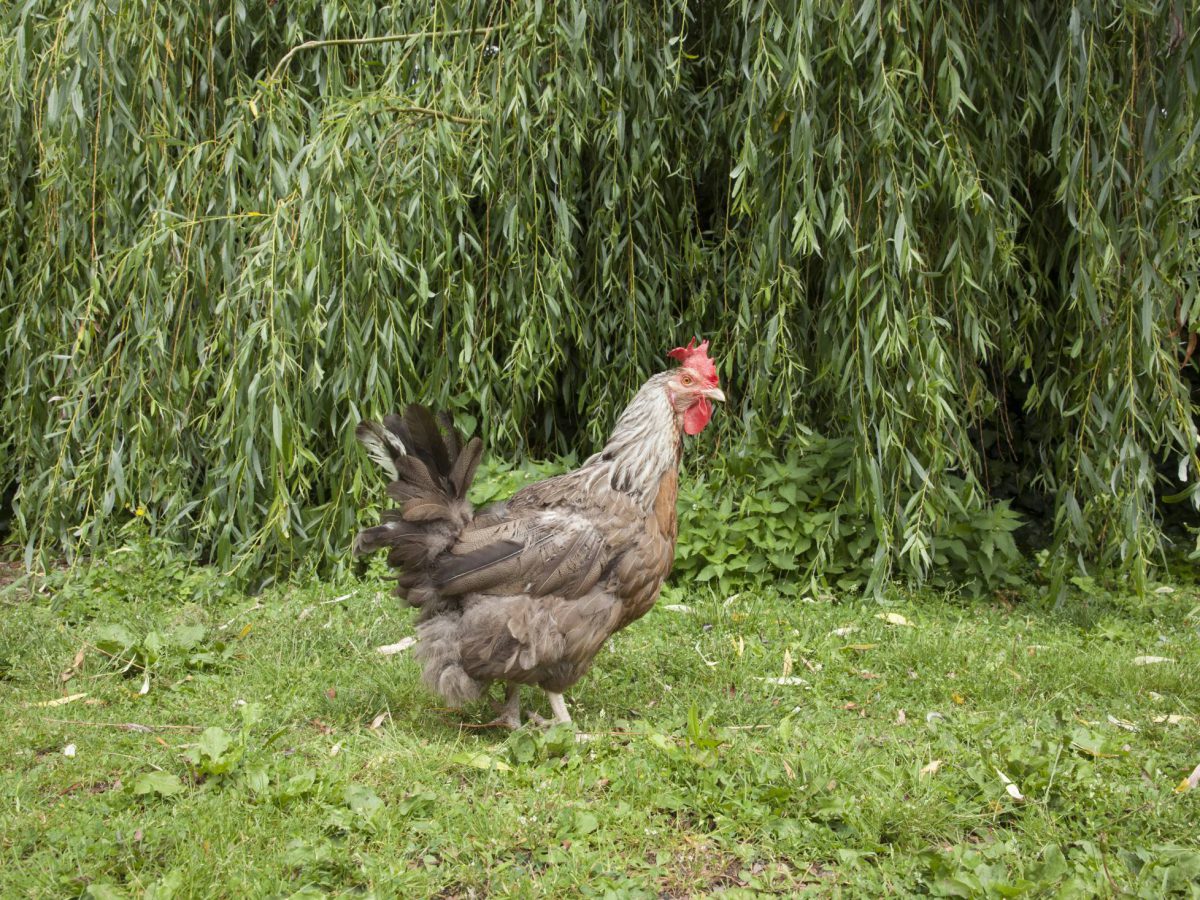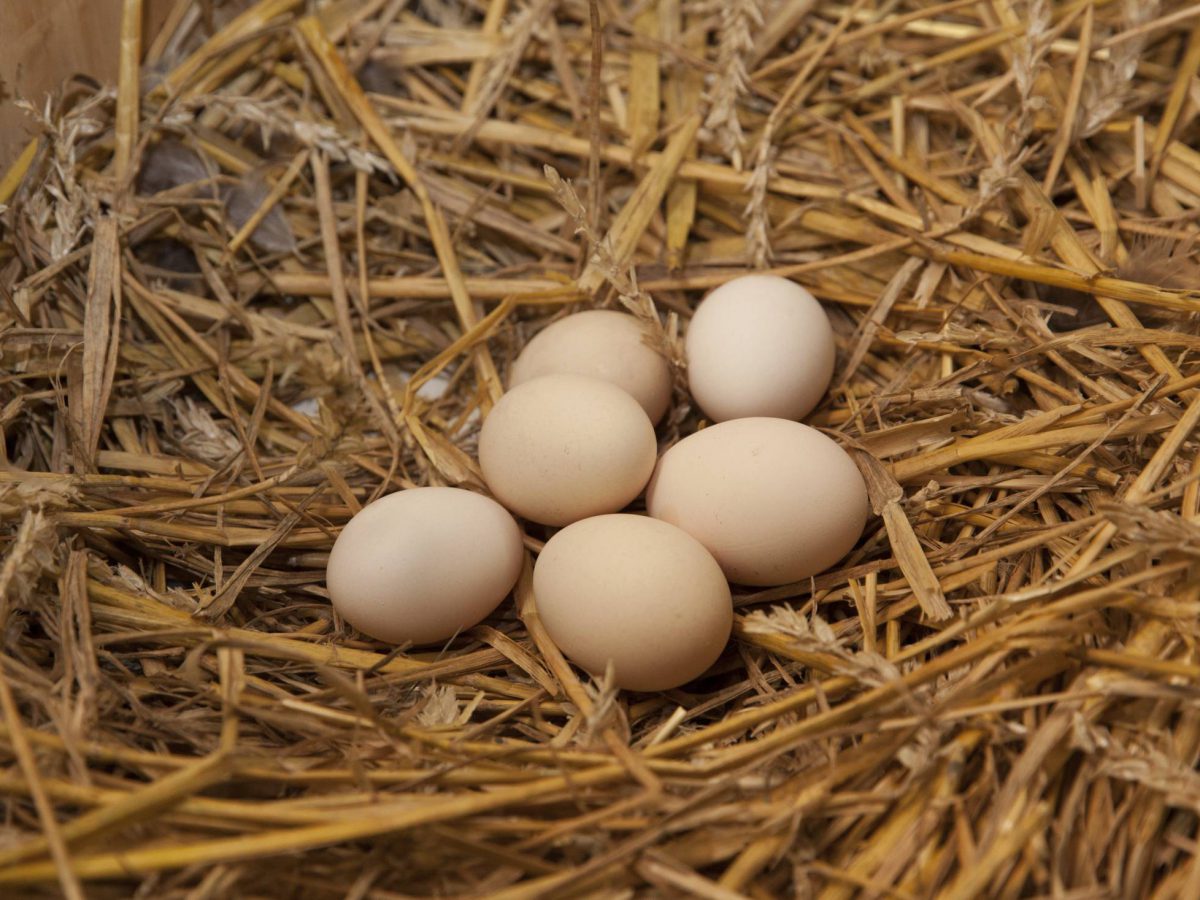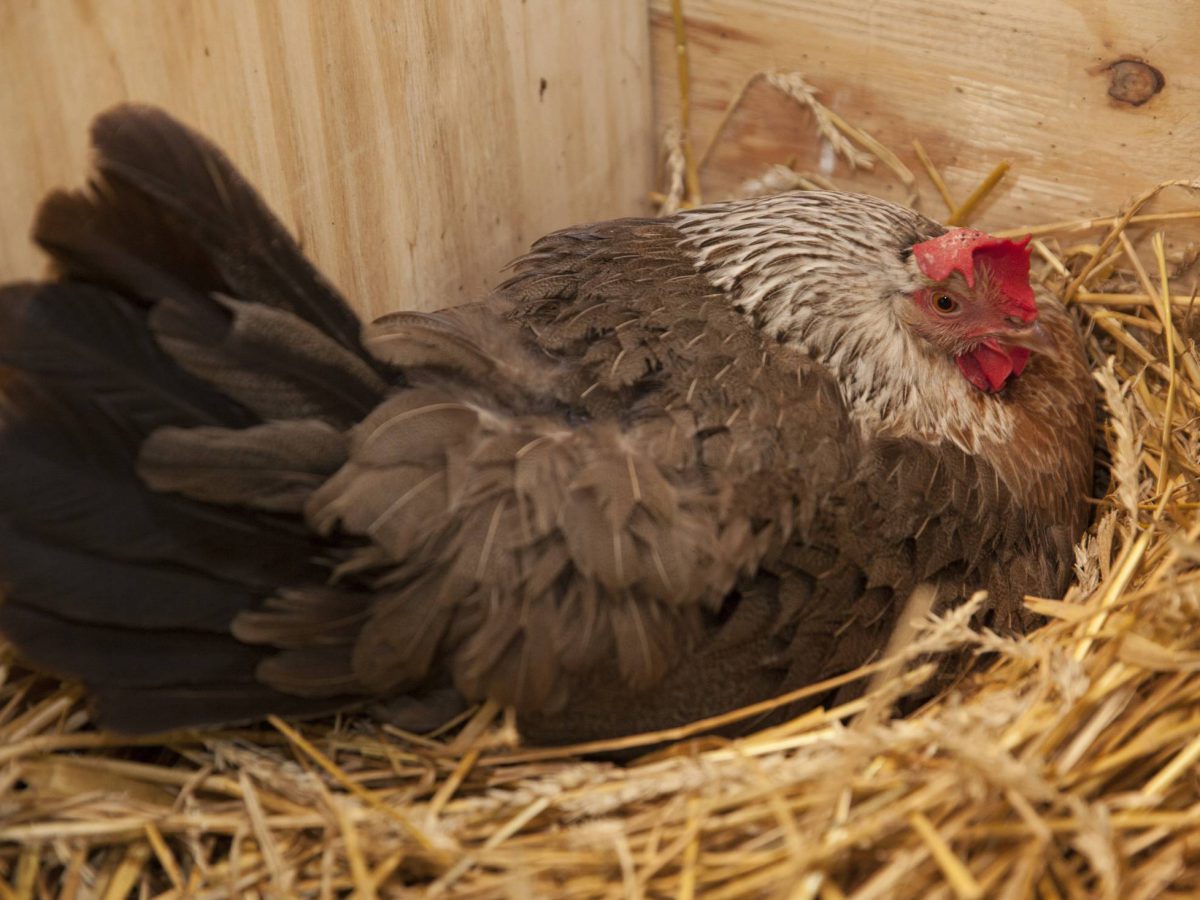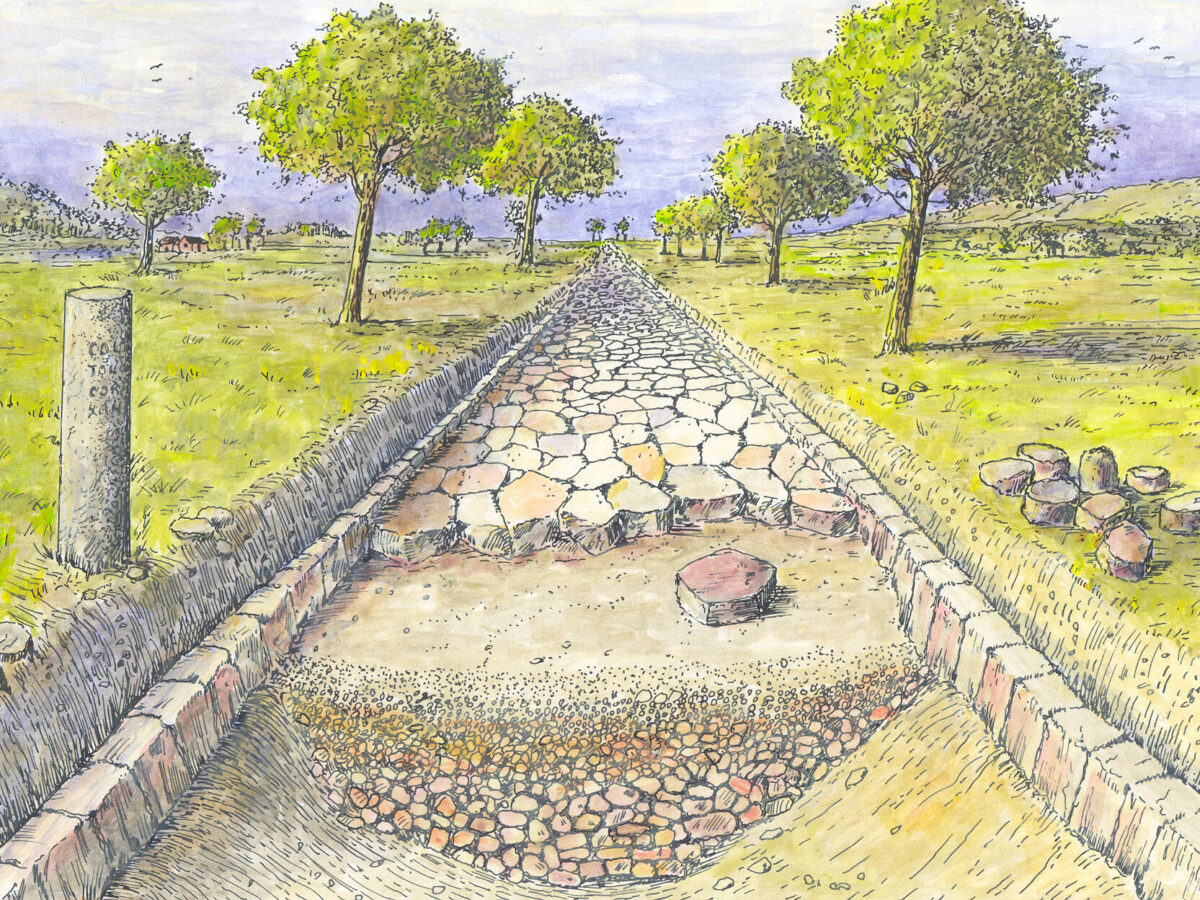The Roman Kitchen: Adventurous, Yet Familiar
Author: Leonie Kohl
Photography: Philip Driessen

Flamingo tongues, roasted mice, and peacock on the spit. Jasper Habets, owner of Villa de Proosdij in Klimmen, has a passion for Roman cuisine. But these exotic delicacies were not part of it — at least, not for the “ordinary” Roman. “Only emperors and other high-ranking figures ate such dishes. What I want is to reintroduce people to the real Roman kitchen. It’s certainly adventurous from a culinary point of view, but there’s nothing strange about it.”
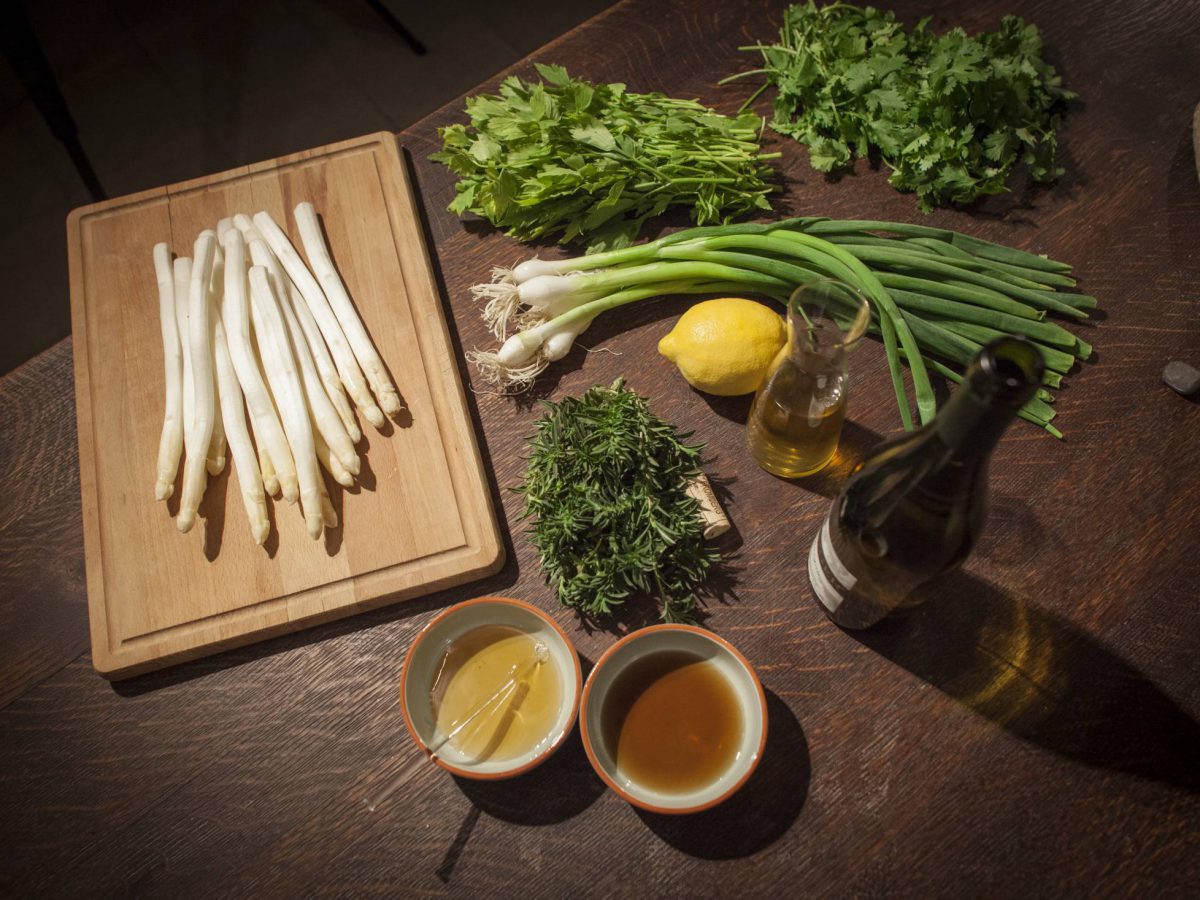
Two thousand years ago, the Romans occupied this region, South Limburg. They built roads, villas, and bathhouses, and brought along their own eating habits. For the local population, everything changed. With the animals and plants the Romans introduced, the land suddenly produced new flavors. Flavors that we now consider perfectly normal were brand new back then. Jasper would love to travel back in time: “The Roman era was very exciting from a culinary perspective. The advanced infrastructure of the Roman Empire made it possible for livestock, food, and seeds to be transported over long distances for the very first time. The Via Belgica cut through what later became South Limburg and brought new culinary influences here as well.”
The Romans introduced much of the food that is still part of our daily lives: pigs, chickens, cherries, plums, grapes — and their by-products such as eggs and wine. “People in this region ate very pure food, dishes that we now consider completely normal,” says Jasper. “From milk and herbs they made a fresh curd cheese that we would now call hangop. From spelt grains they cooked a porridge eaten with honey or fruit — a classic ‘European’ grain breakfast. Spelt was also widely used for baking bread. People ate lentils and different kinds of cabbage. Meat was a luxury. They ate rabbit and venison hunted in the forest, but you only slaughtered your cow or chicken when it no longer gave milk or eggs.”
Herbs: the pepper and salt of the time
Characteristic of Roman cuisine is the use of herbs — something that had hardly been done before. The Romans brought with them a wide variety of herbs that we still love today. “Rosemary, sage, lavender, thyme, and lovage were the pepper and salt of the Roman kitchen. Pepper and salt themselves were known in cooking, but not yet affordable for ordinary people. Herbs simply grew in their own gardens.” Herbs were used to give dishes more flavor, but also to disguise flavors. Food that we would long since have thrown away for being “past its date” was, in Roman times, still prepared with a generous amount of herbs. Lovage in particular was a favorite — a herb we now know as the Maggi plant. Some preferences never change…
“Culinarily, the Roman era was a thrilling time. The Via Belgica introduced new flavors to present-day South Limburg.”— Jasper Habets
How it is that we still know relatively much about Roman cuisine is quite a remarkable story. “The life’s work of a Roman cookbook author has been preserved in an admirable way. The wealthy Roman Apicius devoted his life to recording recipes from across the Roman Empire. His gastronomic encyclopedia consisted of ten volumes and was arranged much like your grandmother’s cookbooks. There was one book full of poultry recipes, one on sauces, and so on. Quantities were not included — everything was done by feel. That makes interpreting Roman cuisine all the more exciting.”

Roman food, Roman gardening
Jasper’s love for Roman food doesn’t stop in the kitchen. The garden of Villa de Proosdij — or rather, the hortus — is designed as a faithful recreation of Roman gardens. For garden enthusiasts there are decorative elements such as a Roman rose garden, an amphitheater, a cypress avenue, and a true-to-life replica of the garden of Pliny the Elder. This Roman, author of the very first classical encyclopedia, loved to write about his garden. From these letters comes much of the information Jasper used for his reconstruction. Not only garden lovers, but also enthusiasts of (Roman) food can see how everything grows and flourishes. In the hortus of Villa de Proosdij there are beehives, where the bees collect honey from the estate and its surroundings. There is an herb garden and even a “Garden of Death” with a variety of poisonous plants. The sloping hillside forms the perfect setting for a Roman vineyard. “We have five hundred vines here of an old grape variety, the Johanniter. From these grapes, wine is produced in the traditional way. This continues a centuries-old tradition: in the earliest mention of the estate, a deed of donation from the French Queen Gerberga in 968 AD, vineyards are already recorded.” In addition to honey, herbs, and wine, the estate also produces fruit — grown on tall-stemmed trees, the cultivation method introduced here by the Romans.
“Here we grow five hundred vines of an ancient grape variety: the Johanniter.”— Jasper Habets
The five-toed chicken
Another very special piece of Roman heritage is happily scratching around the yard. It was the Romans who introduced the chicken to what is now South Limburg. Hard to imagine now, but before that time, chicken eggs and chicken meat were not on the menu. Jasper: “In those two thousand years something peculiar has happened to our chickens. Over time, the chicken actually lost a toe! All our modern chickens have four toes, but what turns out? The original chicken from Roman times had five. Because the Romans recorded everything so meticulously, we know exactly which breed of chicken they kept. After a long search, I managed to track this chicken down, and now a small Roman chicken family roams in our garden.”
The Cookbook of Apicius
Marcus Gavius Apicius wrote the only surviving cookbook from Antiquity: De re coquinaria, better known as the Cookbook of Apicius. He was a very wealthy Roman who filled his life with consuming lavish meals and hosting extravagant banquets. When he had squandered his fortune, he took his own life by swallowing poison.
